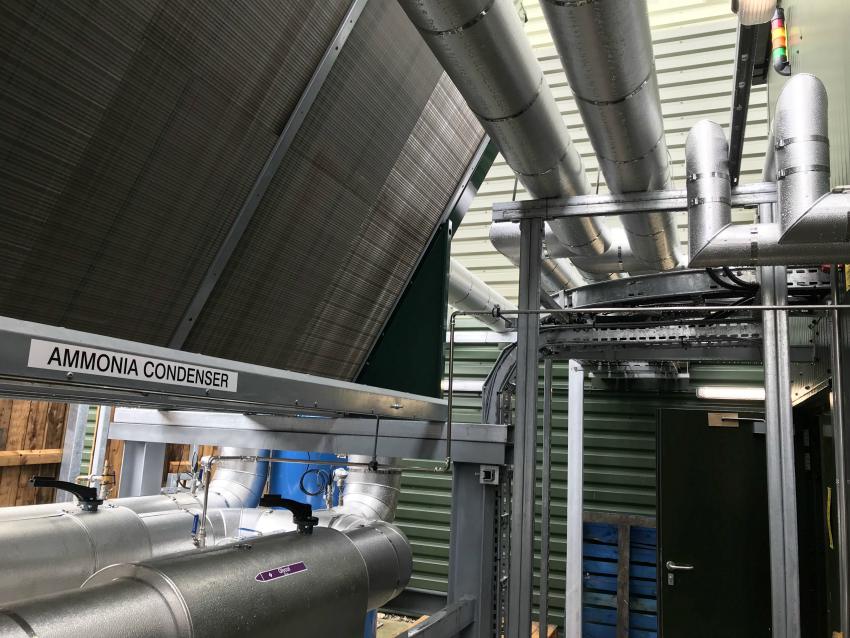24 September 2019
|
| Ed Whinyates of Stonegrove Refrigeration says the industry should be more pro-active in moving towards natural refrigerants and reducing its carbon footprint. A great deal has been reported recently about the fight against climate change and the need to reduce greenhouse gasses to near zero by 2050. The committee on Climate Change (CCC) says that this can be achieved in the UK and - if other countries follow suit - there is a 50/50 chance of the world staying below the dangerous threshold of a 1.5C temperature rise by 2100. Although there is a fear that any drastic changes could impact on the UK economy, it is argued we can no longer ignore the inevitable – change needs to happen. |
The cost of energy dominates the lifecycle cost of most refrigeration equipment and, over its life-span, the cost of energy can be around five times the original capital cost. End users can accrue significant financial savings over the lifetime of their equipment by opting for more energy efficient alternatives | Refrigeration and air conditioning is necessary for life and will continue to expand worldwide. Its impact on the environment is huge; it is said that the refrigeration sector consumes about 20% of overall electricity used world-wide, with some saying this figure could be as great as 30%. It is only going to rise with a combination of economic growth and urbanisation leading to a great demand for cooling. This must beg the question: can the refrigeration industry afford to continue without needing to make some changes (drastic or otherwise)? Aside from the enforced refrigerant phase outs, it would be naïve to think that the government will not continue to target the refrigeration sector to reduce its carbon footprint - either with a carrot or a stick (most likely both). Many efforts have already been made with new equipment and technology to help with the carbon footprint reduction, and there are solutions already available. There is not a ‘one size fixes all’ remedy but, with sound thought and application, we can make some changes now and not wait to be forced into panicked action. New refrigeration technologies do not need to be part of the global warming problem – they can be part of the solution (for example, heat pump technology). How can we apply what is already available? All refrigeration and AC installations should start with a design. Maybe the first question that should be asked, at the beginning of the design phase, is “how does this impact on the environment?” The obvious starting place would be the use of natural refrigerants - like ammonia, CO2 and propane - instead of HFCs and HFOs. It is accepted that natural refrigerants cannot currently be used as a solution for all refrigeration applications but, where possible, they should be prioritised. HFCs in cooling systems are significant users of energy (electricity) and any leakage of the refrigerants used are significant sources of greenhouse gas emissions. Natural refrigerants with minimal or zero global warming potential (GWP) will only create reductions in greenhouse gas emissions. The use of natural refrigerants in larger industrial refrigeration applications are proven to be more energy efficient. Less energy required to run the plant = lower impact on the environment. If the refrigeration and AC industry were to focus on improving energy efficiency there would be major benefits. Many of the available energy efficiency improvements create positive financial savings for the end user. The cost of energy dominates the lifecycle cost of most refrigeration equipment and, over its life-span, the cost of energy can be around five times the original capital cost. End users can accrue significant financial savings over the lifetime of their equipment by opting by opting for more energy efficient alternatives and avoiding paying for more electricity. Refrigeration and AC equipment efficiency can lead to a lower peak electricity demand. With the continued increase in electricity costs the pay-back on efficient natural refrigerant technology is far quicker, compared to equipment with higher GWP refrigerants. Efficiency improvement opportunities are greatest during the refrigeration design stage. Designers and end users should approach the required solution with an effort to reduce the cooling load. Good examples of this being the selection of appropriate equipment type and size, with high efficiency cycles and components. There is also the use of appropriate controls to maximise efficiency under all operating conditions. A good installation, followed by operating and maintenance practices, can also support high efficiency operation throughout the life of the equipment. The move to natural refrigerants and energy efficient designs will create barriers that need to be overcome. To a certain extent the industry is at the mercy of the end client, and the capital investment that they are prepared to make. However, by educating end users, they will have the information to make informed choices. By doing this, financial barriers and objection to increased capital expenditure can be overcome – especially when the lower lifecycle cost and greater lifespan of equipment is shown. All energy efficiency improvements provide energy cost savings for the end user. Many efficiency improvements involve some extra capital cost (for example the use a variable speed motor instead of a fixed speed motor), but this is recovered over a period of time out of the energy savings. As a new high efficiency technology matures it is likely that any capital cost difference between low and high efficiency designs will fall. The whole industry needs to be more pro-active in its move towards more efficient natural refrigerants. “This is how we have always done it” is no longer a good enough excuse. www.stonegroverefrigeration.co.uk 01279 408690 [email protected] |
Content continues after advertisements









